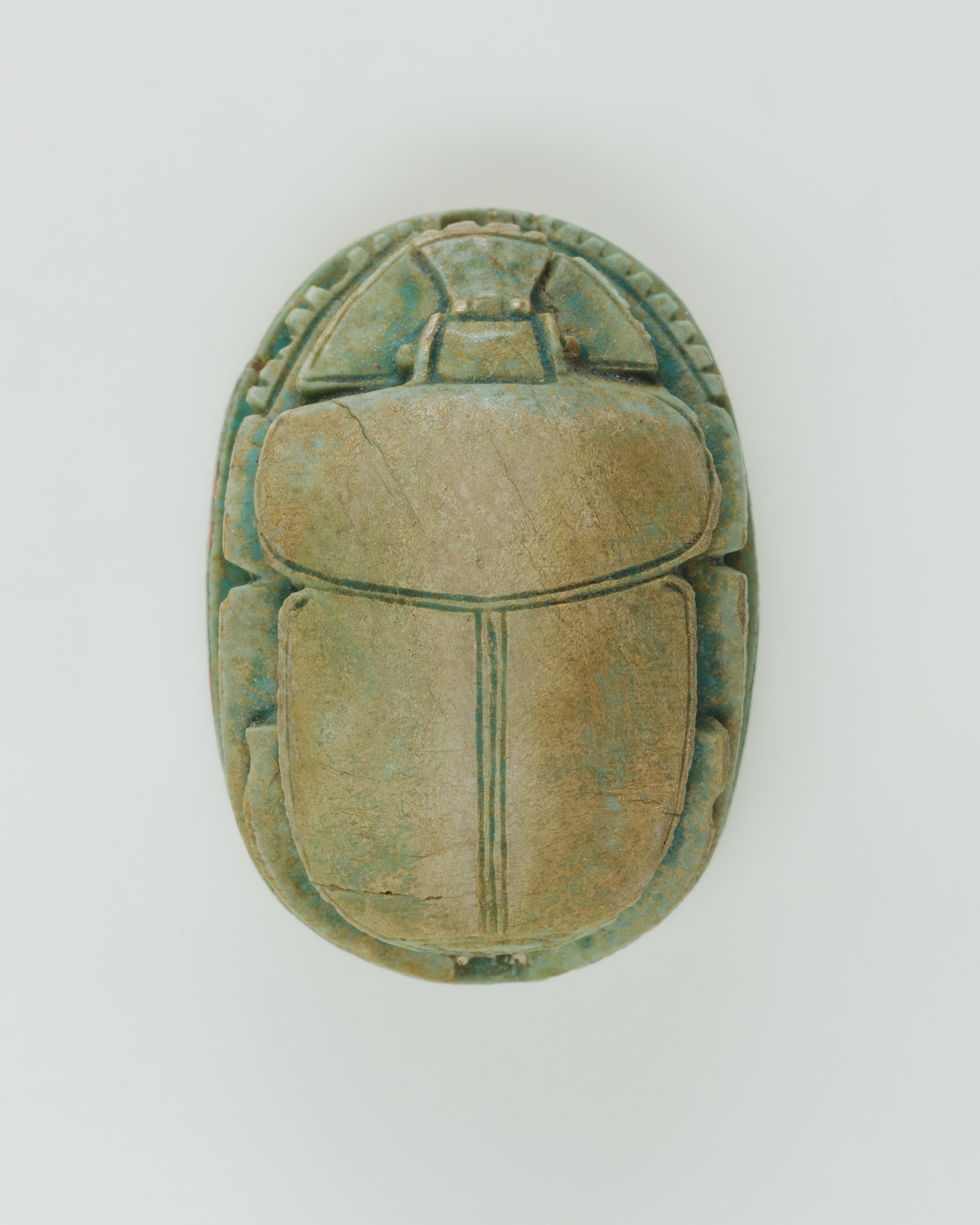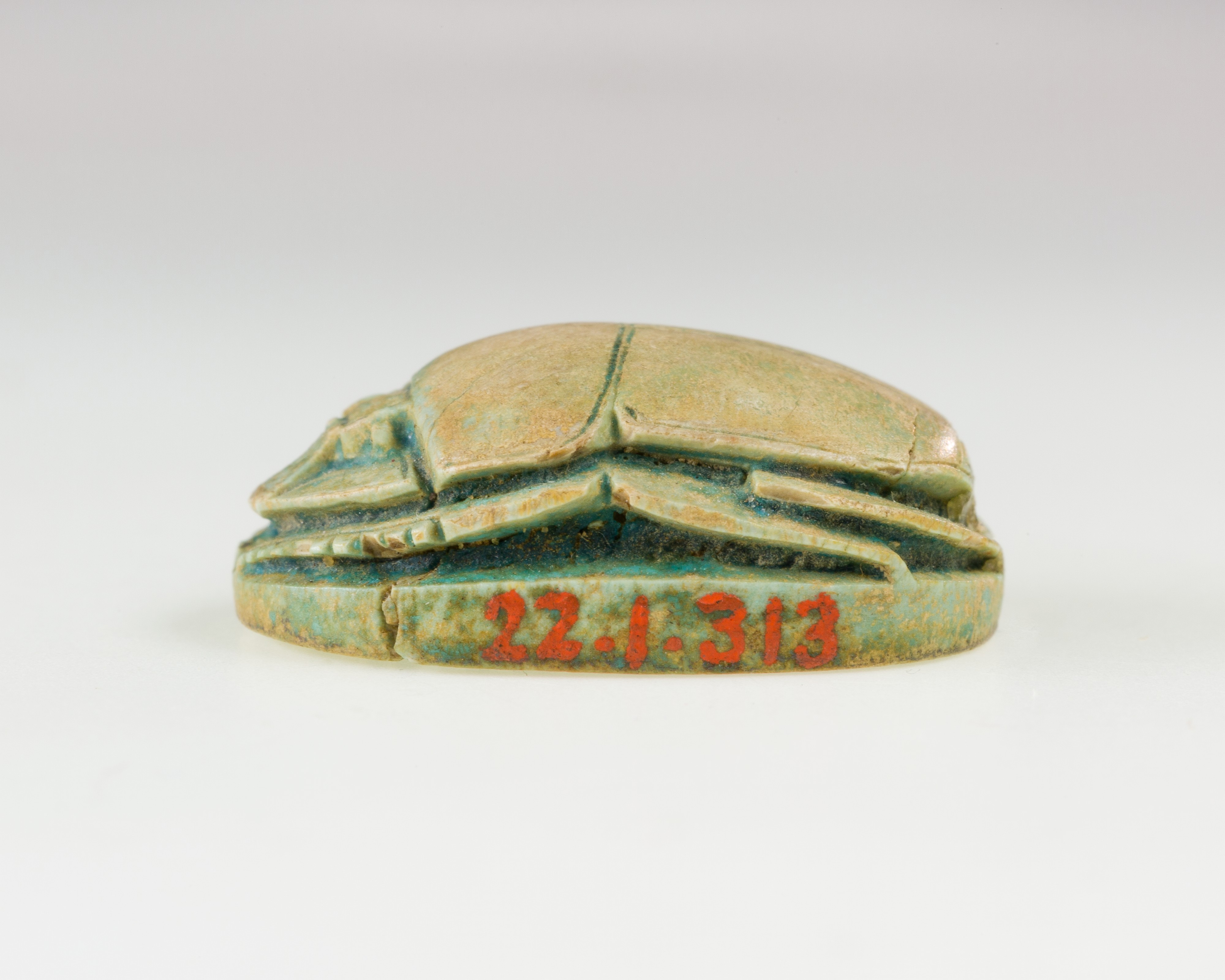Scarab Inscribed with Hieroglyphs
Middle Kingdom
The scarab is inscribed with a symmetric arrangement of hieroglyphs, not meant to form words but chosen instead for their positive meaning.
Such compositions are particularly prevalent on design scarabs of the late Middle Kingdom (late Dynasty 12–Dynasty 13, ca. 1850 –1640 B.C.). They serve as models for the wide array of variations seen on Egyptian scarabs of the Second Intermediate Period (Dynasty 14–17, ca. 1640–1550 B.C.) and on Canaanite scarabs (Middle Bronze Age IIB-IIC, ca. 1700–1500 B.C.).
Due to rights restrictions, this image cannot be enlarged, viewed at full screen, or downloaded.
This artwork is meant to be viewed from right to left. Scroll left to view more.





